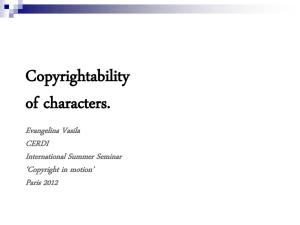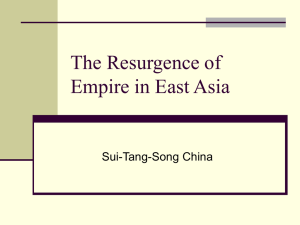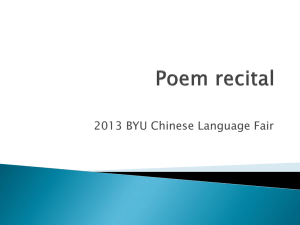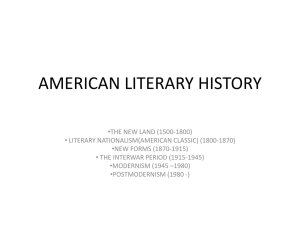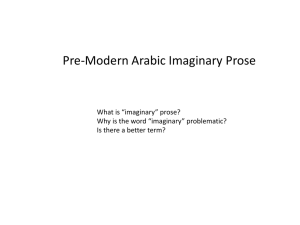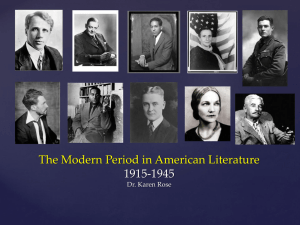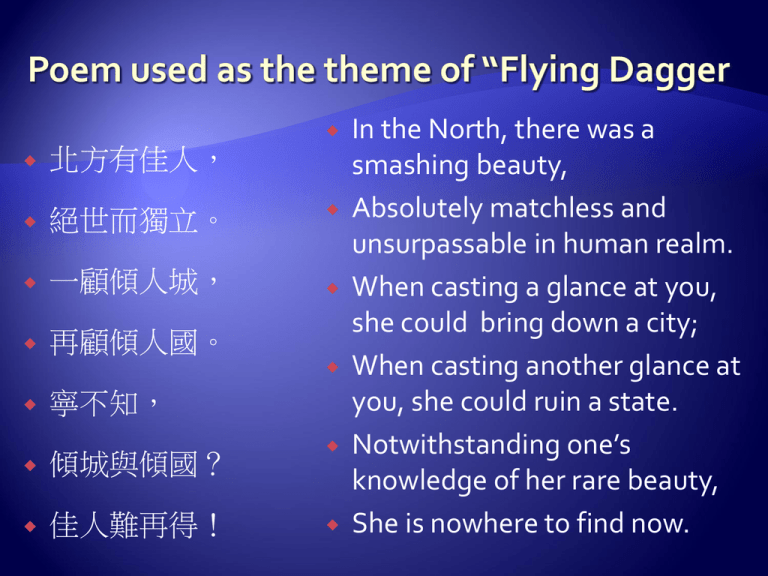
北方有佳人,
絕世而獨立。
一顧傾人城,
再顧傾人國。
寧不知,
傾城與傾國?
佳人難再得!
In the North, there was a
smashing beauty,
Absolutely matchless and
unsurpassable in human realm.
When casting a glance at you,
she could bring down a city;
When casting another glance at
you, she could ruin a state.
Notwithstanding one’s
knowledge of her rare beauty,
She is nowhere to find now.
The critical essay—the classical prose essay (gu wen
古文)—was the most important
Epitomizes Tang scholar’s achievement in prose writing
Resulted from a “Return to Antiquity” (fu gu) movement
which called for an “Ancient/Classical Style Prose”
movement to reform the writing of prose.
Intellectuals joining this movement are referred to as
“restorationists” by Lewis, but would better be viewed as
“classicists.”
HanYu was the leader of this movement
Advocated that literature, in any forms but particularly in
prose, should “convey the Dao/Way” and is for the sake of
the Dao/Way—the Confucian Dao/Way.
They saw literature as a fundamental and guiding
aspect of culture and literary men as ones who
could help reorder Tang politics and society with
their literary skills and classical knowledge.
Literary writings should put a premium on moral
seriousness as well as political and social
obligations
Literary men should present the situation of the people
to the emperor, in memorials, political poetry, and folk
songs
They should use their persuasive powers to advise and
guide the emperor in his decision-making
Han Yu’s notion of “scholar-officials” (shi, 士)
Understand that self-cultivation is of fundamental
importance because it prepares one to help create
social order or restore social and political order to a
society long acclimated to Buddhist and Daoist
teachings.
Understand that only a sage king, who adheres to the
Confucian Way, can rule the state effectively
Understand the historical trends that have led to the
demise of Confucian teaching—the rise of Buddhism
and Daoism
Understand that the economic problems were caused
by nonproductive, parasite-like population—the clergy
“In antiquity there were four classes of subjects;
now there are six. In antiquity only one class were
teachers; now there are three. For each farmer
there are six people that consume his produce.
For each craftsman, six use his products. For
each merchant, there are six people who must
live off his profits. Under such conditions, is it any
wonder the people are impoverished and driven
to brigandage?”
“In ancient times men confronted many dangers.
But sages arose who taught them the way to live
and to grow together. They served as rulers and
as teachers. They drove out reptiles and wild
beasts and had the people settle the central
lands. [When] the people were cold, they clothed
them; [when] the people were hungry, they fed
them. Because the people dwelt in trees and fell
to ground, dwelt in caves and became ill, the
sages built houses for them….”
“But now Buddhist doctrines maintain that one
must reject the relationship between ruler and
minister, do away with father and son and forbid
the Way that enables us to live and to grow
together---all this in order to seek what they call
purity and nirvana. It is fortunate for them that
these doctrines emerged after the Xia, Shang,
and Zhou dynasties and so were not discredited
by the ancient sages and by Confucius. It is
equally unfortunate for us that they did not
emerge before that time and so could have been
corrected by the same sage.”
“The titles of emperor and of king are different,
yet they are sages for the same reason…..What is
the teaching of the former kings? To love largely
is called a sense of humaneness (ren 仁); to act
according to what should be done is called
righteousness (yi 義); to proceed from these
principles is called the moral Way (dao 道); to be
sufficient unto oneself without relying on
externals is called inner power (de 德)…[These
are] what I call the Way, not what the Daoists
and Buddhists have called the Way”
“…what can be done about them [Buddhists and
Daoists]? Block them or nothing will flow; stop
them or nothing will move. Turn them into
commoners, burn their books, turn their
residences into huts. Illuminate the way of the
Former Kings to guide them. Then those
widowers, the widows, the orphans, the childless,
the crippled, and the diseased will be cared for.
This, indeed, seems possible.”
Empress Wu’s reign,
Buddha flanked by two Bodhisattvas
Bodhisattva Manjusri riding the lion,
AD. 777, Daozong’s reign
Tang Fiction: Short Stories
Tang
short stories made important strides
in the development of Chinese fiction
Writers
introduced the new form of storytelling called chuanqi , “tales of the
marvelous,” or “transmissions of the
remarkable,” written in literary style
Sources of stories were drawn from the
prosperous, brilliant, and volatile metropolitan
life in Chang’an
Tang Art of Story Telling
The
crafted literary forms and conscious
artistry in the creation of a literary text is
expressed in at least four ways:
Writers
used a range of literary techniques
to rework on previous stories orally told,
making the stories anew and more
interesting.
Writers portrayed dreams and made them a
central role in their narratives to reflect their
insight into reality and their yearning for the
fantastic.
Writers
manipulated received narrative
conventions to create new narratives; they
skillfully expanded the elements of
romantic liaisons between men and spirits,
particularly humanized fox-spirits, blurring
the boundary between human and animal
worlds.
They included other literary modes in their
narratives: poems, letters, popular songs,
anecdotes, historiographical techniques,
and quotations from received works.
Types of Stories
Three
major types of stories:
Love
stories, fox romance (pseudo-historical)
Knight errantry/Chivalry (often historical)
Supernatural (purely fictional)
Most
easily identified features
Use
of incidental poems
Capital city was the setting
Didactic commentaries made in conclusion;
Moral lessons taught in the form of satire
Narrator also a witness to the narrated event
More realistic human elements were used
Characteristics of the Stories
Love
stories, fox romance:
Tended
to portray unrequited love resulted
from the heartless lover or the mischievous
courtesan
Knight
errantry/Chivalry
protagonists
are often historical
personages
Stories are based on the mix of historical
facts and unofficial histories
The
Supernatural
tell
the love between a man and a woman
who is the spirit of the animal, usually fox
The animal, after attaining the Way and
possessing supernatural power, is able to
transform itself into human form, usually a
woman
On rare occasions, stories may have a
happy ending and the superhuman is
allowed to run its happy course
Realities Reflected in Tang Stories
Some aspects of the stories reflect realities of
Tang culture
numerous activities of the Tang city dwellers, such as
scholars, merchants, artisans, courtesans, vagabonds,
beggars….
the structure and look of the Tang cities, towns, and
villages
The ethics, values, customs,…reflected the mix of
Confucian, Buddhist, Daoist tenets.
Romance and sex were normal human desires,
eroticism and sensuality were not necessarily
condemnable. They were allowed in private spaces.
Money
represented power, status, and
family order
Men were weak, passive, without
character, while women were active,
decisive, and brave
Why Short Stories?
Reasons
for writing short stories? Writers’
desire to
Continue
the story-telling tradition
Refine previous zhiguai fiction
Reflect their sensitivities to social changes
that supplied new subject matters
Show their skills and versatility in writing
Satirize powerful and exploitative aristocrats
Express sympathy and praise for righteous
and brave women


